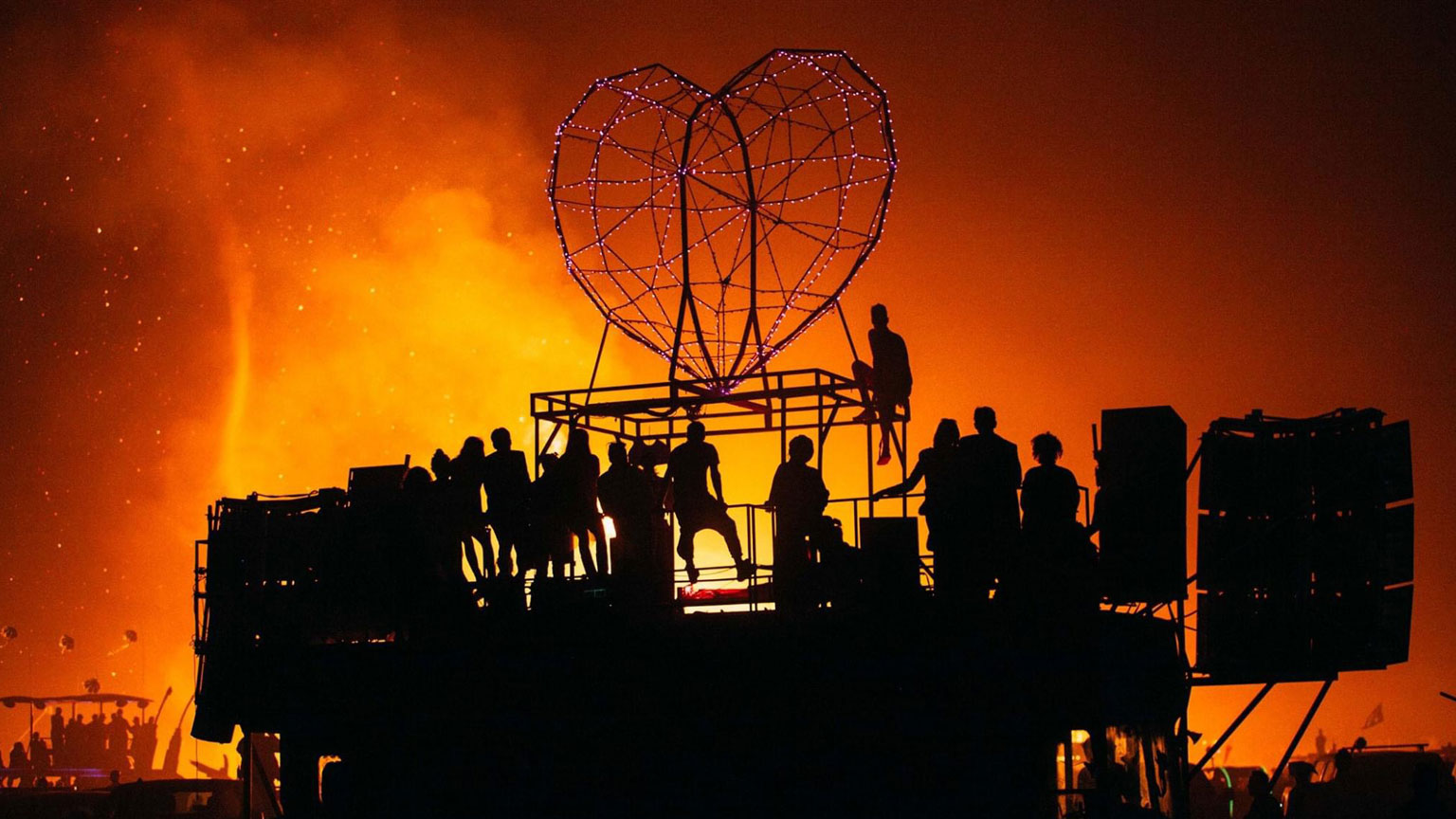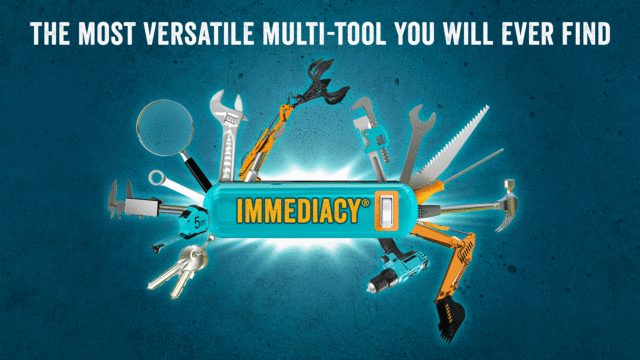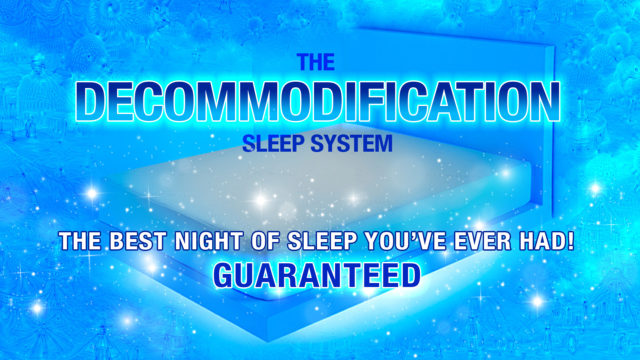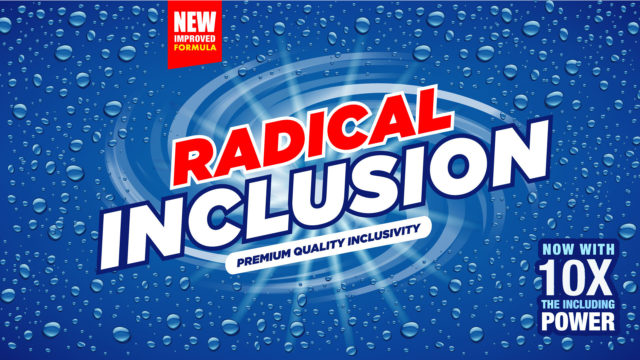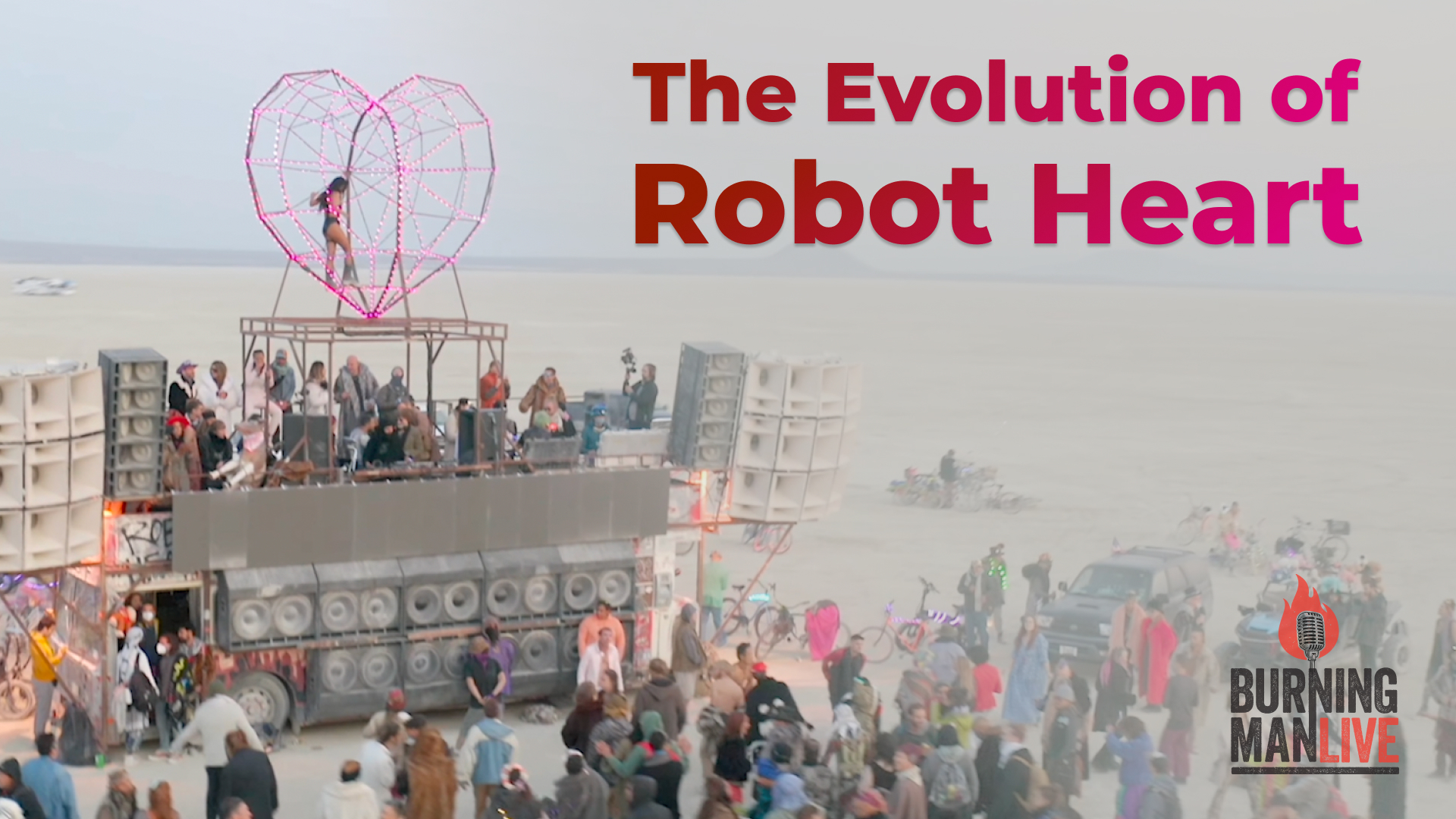
The Evolution of Robot Heart
Robot Heart started with a simple sound system on an old double-decker bus at Black Rock City. Over the years, it has evolved into a bespoke sound system, light arrays, iconic art, and an all-star lineup of musical talent performing to massive crowds at sunrise on Playa.… all on that same old double-decker bus.
Robot Heart also expanded its support of arts and artists beyond the playa, including New York’s Central Park, Miami’s Art Basel, and their residency program in Oakland, California. For the 2nd year, the team brings together various Burning Man camps, artists, and musicians from April 25th to May 18th.
A few years ago, Robot Heart created a 501c3 Foundation to make all this happen. Stuart talks with President Gary Mueller and Board Members Clare Laverty and Justin Shaffer. They trade tales from developing a foundation, collaborating with creatives, and taking pleasure from other people’s pleasure.
Lee Burridge – Robot Heart – Burning Man
Rodriguez Jr. (Live) Featuring Liset Alea – Robot Heart – Burning Man
Transcript
GARY:
Wow, the playa is just the perfect place for sound, and especially at Burning Man, the deep playa, where you could go out and ideally drive a bus, in this case and have no one around you except for sand and art and eventually, as we’ve become known for, our “sunrises,” so to have music throughout the night and in particular at sunrise, where you could experience in the deep playa, how great to experience sound out there especially during the magical moments of sunrise when you’re with others and you’re looking at the art.
The bus in and of itself we think of as an instrument, actually. And all the time and effort and energy that goes into this beautiful 52 year old bus, is basically a platform for other people to share their talent and gifts and music and that type of thing, on playa and off.
STUART:
Hey, welcome back, everybody to Burning Man LIVE. I’m Stuart Mangrum, and I am here today to have a conversation about one of the longest running and best known sound camps in Black Rock City. Renowned for their sunrise sets, for their all star DJs, for their beautiful, heart shaped sunglasses, you probably know them as Robot Heart. I’ve got several of those folks with me today, some of their leadership circle. I’ve got Gary Mueller. I’ve got Justin Shaffer. I’ve got Clare Laverty. Hey, everybody. Welcome. Thanks for coming on the program.
GARY:
Thanks for having us.
CLARE:
Thank you.
JUSTIN:
It’s a pleasure to be here.
CLARE:
Yeah. Thank you so much.
STUART:
Robot Heart is one of the camps that has evolved past the point of just being a camp at Black Rock City, and it’s now doing some amazing things out in the world.
Now, you guys have always done stuff out in the world. Actually, fun story. My colleague Dominique Debucquoy-Dodley, who runs our Communications team, he told me the other day that he grew up in Manhattan and he said that he’d heard of Robot Heart before he heard of Burning Man. So there’s a long history of community work and taking parties out into the people.
But lately, what’s been happening is actually on the other coast out in Oakland, California, Robot Heart has been running a residency program. Justin Shaefer, why don’t you sort of paint that scene for us and let us know what that experience has been like for people?
JUSTIN:
Yeah. Happy to. We’ve been experimenting for a long time, trying to connect the dots between the values that we all hold dearly as Burners and really want to support. And when we thought, what were we going to do this year, and where could we do it? Oakland actually just seemed somehow really obvious.
And it surprised some people, but what we thought would be interesting would be to take the Robot Heart energy, really our kind of in a sense, our sort of platform for creative expression, and go and build in community in a place that we thought could benefit the most from lots of positive energy coming together. And we found this space called The Loom over a year ago now and just started dreaming about it.
It was a pretty organic process coming together. And what we ended up producing was a month-long series of events. Music is obviously a huge part of everything that we do, but the residency itself is so much more. We had kids coming in learning about DJing and lighting and sound design and production design. We did a speaker, a free speaker series, nearly every night we were open. Some folks from the Burning Man organization came and spoke, and just a broad representation of the community. We invited artists that we love and respect to come in and help us all learn together about music.
And the idea for the residency was actually that it’s the Robot Heart sound system itself that was in residency in the space. So if you think about what a residency normally means from the perspective of creative expression, you know, a venue can invite an artist and say, “Come here, perform repeatedly to a sort of intimate audience, and really express yourself.” Particularly at Burning Man, we have this experience where lots of artists want to perform and we do our best to make that possible. But we thought, what would it look like and feel like if we allowed for more focused performance over an extended period of time, and something that can really evolve?
And so while it was a month-long series of events, there was also five weeks of build before that where we were able to start really from scratch with some of our crew, and were just overwhelmed with positivity, the community support for the project. We ended up going from about three people to 180 people volunteering and working on this. And honestly, it felt a lot like Burning Man, going out there and building in the desert. It was a really neat experience for all of us.
STUART:
Except in a large, very large industrial space, instead of out under the playa, right?
JUSTIN:
Well, yeah, we certainly weren’t on the playa, but it was an indoor/outdoor space. We worked with at least ten other Burning Man camps. The Temple crew was really involved. We were, we kind of shared the space with them, and frankly too many people to name right now because I will miss a few.
STUART:
All right. Well, let’s get back into the mechanics. First of all, though, to set the scene for – maybe, it’s possible there’s a listener out there who’s never heard of Robot Heart before. So Gary Mueller, take us all the way back. What’s Robot Heart’s Burning Man origin story and how has the group evolved over the years?
GARY:
Well, let me go all the way back to my brother, my, sadly, my late brother, who as many of you know, passed away in 2021. He was always into music, and he was into art and he loved creative expression. Going way back to the mid 2000s, he was creating a digital lighting company and was introduced to Burning Man by a couple of other Burners and one Robot Hearter named Walt Smith.
They went out to Burning Man, and as happens to a lot of people, my brother was completely blown away. I mean, here’s someone who loves self-expression, loves at it’s core, the Burning Man principles that even before I think he knew about the Burning Man principles, and went out there and was just amazed and said, “Wow, this is something I want to be part of.”
He camped together with Walt and a couple of others at Disorient with Leo Villarreal and that crew, and then had the idea of buying an English double decker bus. For those who don’t know, it’s a 1972 Leland English double decker bus, that he decided to buy and then convert into the Robot Heart bus.
The first year that Robot Heart was camped on Playa was 2008. There was a great core crew that joined George, people like Rob Scott and Kim Tran, Michael Calabrese, and some others, and started Robot Heart.
The idea from the beginning was to create a mobile sound system. George loved sound, but he went to Burning Man, and one of the things he noticed was that a lot of the sound camps were next to each other. Obviously, they were stationary. He said, “My God, this is in addition to being an amazing place with all the principles and the art and the people,” he said, “Wow, the playa is just the perfect place for sound,” and especially a Burning Man the deep playa, where you could go out and ideally drive a bus in this case and have no one around you except for sand and art and eventually, as we’ve become known for, our “sunrises.”
So to have music throughout the night and in particular at sunrise where you could experience it in the deep playa. So that’s where the idea came from. He, in addition to buying the bus, created the sound system. Originally, he purchased the sound system, but then with others, wanted to create custom speakers and a basically bespoke sound system for the playa.
STUART:
Oh, wow.
GARY:
The idea was, hey, out in the deep playa, how great to experience sound out there, especially during the magical moments of sunrise when you’re in the deep playa and you are with others and you’re looking at the art. So that’s where it all started.
STUART:
These days tell me about what size is the camp. How many campers you got in your group?
GARY:
When we’re on Playa, we tend to be about 90 to 100. And we keep it at that level because, historically we’ve believed that on playa, for us at least, once you go beyond 100 people, it’s hard for everyone to stay in our focused community and do what we need to do. It works. Once you get bigger than that… What most people don’t realize is that most of Robot Heart has been there many years, a lot of Robot Heart. And we tend to take on very few new people, partly because we just, we say to ourselves, if everyone at Robot Heart invited their best friend, the camp size would double and it would be hard to integrate that. So we try to keep it fairly tight because it’s actually a lot of work to do what we do on playa, and you need a group that really can come together and execute. So we keep 90 to 100 on playa.
STUART:
I’ve heard that number before in other conversations. We just had Level Placer on a couple of episodes ago talking about it. Some people have smaller numbers from their experience than my own, but it’s the friends-of-friends thing. It’s when the camp does double and everybody invites their friend, and all those friends invite their friends, you look around and, “Who are these people?” Right?
That ‘72 Leland, is that still running? Is that still the same bus?
GARY:
It’s still the 1972…
STUART:
Oh, my God.
GARY:
Double decker English bus.
STUART:
I have a friend who had one of those and I know it’s, let’s just say quirky, mechanically. Does it have like an oak wood frame, parts that should be steel or made out of wood underneath it?
GARY:
It has all kinds of quirks. We could go into long stories and maybe…
STUART:
Positive earth. I know, I remember the electrical system was kind of backwards, right?
GARY:
Boy, you know this well. So people who know the bus, and Justin and I can share a couple of stories on this one… We were in the DMV line, Stuart. This was 2019, I believe. And we’re inching along and waiting to get our Burning Man mutant vehicle passes. And as one does, you wait in the DMV line, and every now and then you inch forward. And we had it in Park, and we were maybe midstream in the line, maybe we had waited like two three hours. And I got to go try to move the bus again, and the bus just wouldn’t move. It was locked. And it’s because we couldn’t get enough pressure in the pneumatic system, the air system. And you need to get the pressure above 80 psi for the air brakes to release. So the system was at under 80, and we were basically frozen there cause the air brakes wouldn’t release.
And Justin, and I, and my brother, we have quite the story on that one.
JUSTIN:
It was an interesting day of playa engineering involving lots of things, but fortunately not the originally desired angle grinders.
GARY:
Yes.
STUART:
Actually angle grinders do solve a lot of problems. That’s true.
JUSTIN:
Yeah, we were that was the theoretical last resort. And it ended up being that we were able to plug the hole in the valve with a dime that allowed us to put pressure together, then move. And we rolled around for the rest of that burn with a dime blocking one of the outputs of the pneumatic system.
STUART:
A dime, or – it accepted American money? You didn’t have to put a ten pence piece in there?
GARY:
Brought by some of the guys from the Mayan Camp, by the way.It was a beautiful act, you know, as hard as it was, and my brother said it was probably his, one of his two hardest points on playa because we were literally sitting there for maybe 18 hours. We thought we were going to have to tow the bus, and that that was, we were not going to have a Burning Man that year. It was one of those beautiful Burning Man moments, though. The amount of help we got from other camps, remember Justin, the Cali-oop guys, the Mayans.
JUSTIN:
Camp Walter crew was amazing as well. And the Mayans.
STUART:
The Mayans? You mean the Mayan Warrior sound camp people, not The Mayans, the motorcycle gang. Just to be clear.
JUSTIN:
Yes, exactly.
STUART:
I want to get back to some playa stories. But first, I want to learn a little bit more about Robot Heart’s work out in the world. I understand you’ve actually created a foundation, a 501c3 and Clare Laverty, you’re a board member of that organization. Tell us a little bit about that story and what the intentions and objectives of the nonprofit are.
CLARE:
Sure. Well, we’d always been fully committed about bringing about meaningful change, you know, in the world through music and art and community, and community was incredibly important to us, you know, on playa and at our Halloween parties in New York, etc., that we had been doing for an incredibly long time. But we felt that there was more that we could do. And that the formation of a foundation would give us the opportunity to amplify why what we were doing, kind of further out into the world.
So we set about to organize and set up the foundation to support artists in the arts and to advance public appreciation for both. So we wanted to also not only amplify giving a stage to the arts and artists, but also to be in a position that we could kind of support our own projects, and other people’s projects, to really bring about change through those.
So, since we launched the foundation, we have in fact actually succeeded in all of those missions. We’ve done self created projects, which was something like Fare Forward in New York. We did funded projects which included this Miami Art Basel project. And we did the Oakland residency project. And we have gifted grants to artists as well. So, we have actually succeeded in our mission to date, to kind of tick those three boxes that we set about to do.
But we know that there’s just, like the limits of what we can do here with this foundation, with the community that we have, with the history that we have, and I think the support that we have — and Justin can speak to this more, but the volunteers that showed up in Oakland was phenomenal. And I think the support that we got at our fundraising dinner in New York, pre Fare Forward, is also immense. And we have a really, truly fantastic community that loves and supports what we do and wants to I think hopefully see more of that.
STUART:
Can you talk a little bit more about the art grants that you’ve been able to give out so far?
CLARE:
Yeah, sure. Well, we’ve given art grants to artists both on playa, for on-playa work, and we’ve also given out art grants and kind of city grants. We gave a donation to Central Park’s project as well, and we gave a significant grant to Brandt Brauer Frick for Art Basel, Miami, which was really the beginning of that project for them because they have gone on to do that project on a larger scale since we gave them the first grant to set that project in motion as an arts project.
STUART:
I’m not familiar with that project. Can you tell me a little bit about that?
CLARE:
So essentially, the Multi-Faith Prayer Room from Brandt Brauer Frick wasn’t so much necessarily about traditional faith as they see it, but off the back of COVID and the pandemic, one day one of the gentleman from Brandt Brauer Frick was traveling through the airport and started to think about how people were foreseeing the future, when we were perhaps in a space where people weren’t clear on what that future looked like, and perhaps what future rituals we had, and did people lack faith for the future in the world.
And what they started to do was to record people of every kind of nationality; gender, age, etc. They put together a series of recordings and statements into a room, and it encompassed therefore sounds and light and projection, and music, to create this space within darkness that would then play these voiceovers and these thoughts and hopes and dreams of people. And there was kind of this interplay that was going on between very private thoughts of where people were at, but then they encompass very powerful messages around humanity, and connection.
It was an extremely immersive artistic experience. And I think, you know, what we were really proud to do was to be able to give them the opportunity to kickstart this project that they’d had the vision for, that they needed to get funding.
We kind of we referred to it at the time as like, creating a minimum viable product for them as artists, and to be able to give them a stage and a platform that perhaps they otherwise wouldn’t have been able to have with that initial grant and donation, that I know that they’re enormously grateful for today because it gave them the opportunity to move something along.
GARY:
And to chime in, the New York grant went to the New York City Department of Parks and Recreation. We made that grant right at the end of when COVID was happening, and that was something that was important to us. We have a lot of folks within Robot Heart who come from New York. Just like we’re doing the residency in Oakland, that’s one of our spots where we have a lot of people. And we felt that the Parks and Recreation group was a source of a lot of inspiration, especially during a time like COVID.
I just want to say two of my personal favorites, too, that we’ve done, if you don’t mind.
One is Autumn Spire which was an art piece on the playa by someone who’s affiliated with Robot Heart, Zack Caruso and his partner Eric Coolidge. And they did this great gothic inspired steel tower on the playa, which we were delighted to help. I think we were the first significant grant to kick that off so that they could do it.
And then importantly, there was something on the playa, another great piece called Jay’s Suitcase. There was a Robot Hearter who also tragically passed, and this was by Michael White and Tawny Koslowsky, who created something called Jay’s Suitcase that was another piece of art on the playa that was, I thought, really inspiring. And then a piece that they ended up burning to commemorate Jay’s life.
JUSTIN:
We think about the grant process, the artists that we want to impact and affect and help, in kind of three categories.
- The first is in essence sort of generative from scratch, where there’s somebody who wants to work on a project, or somebody that we know and respect or are curious about, and we just say, hey, maybe some resources could help this move along, where it might not have otherwise. We’re just kind of starting from scratch. And in some sense, some of the stuff for the residency falls under that category.
- And then the other two are this idea where we’re co-producing something with another group, where we’re bringing Robot Heart resources to bear or maybe creatively our team wants to work on something, and there’s another team that we want to work together with. The build of the BitCube at the residency is a really good example of this.
STUART:
Okay. Yeah, I saw that and I didn’t see it. What is the BitCube and tell us about that piece’s trajectory?
JUSTIN:
So BitCube was built by a camp called crime.wav on playa last year, and it’s actually, they did something really wonderful, which is they like upcycled IBC totes, which are 275 gallon water containers. And they actually found a bunch of water containers that hadn’t stored water. They’d been used to store chemicals in the Tesla manufacturing process, and they were just sitting in Tracy, and they didn’t have a home.
They realized that they could treat each one as kind of an individual pixel and light them. They built an eight by eight by eight cube out of them. And each one has four feet of dimension. So it’s, you know, roughly 32 feet by 32 feet, just massive.
We found it a particularly impactful piece because of the way it worked with recycled material, and was just sort of like totally unexpected. And Walt actually had the original idea for this. He was just like, “You know those BitCube guys? Maybe we could get BitCube to come to the residency and we could actually enclose a bit the outdoor space to create a bit more of a container.” And that took us from working in a roughly 3,500 square foot room to like an almost 12,000 square foot site, and was a wonderful collaboration. And so we made an art grant to the BitCube team and just said, “Hey guys, how can we support you getting this here?” They brought their crew in and we actually just all worked together to build it. That’s a really good example of the second category.
- And then the third is really what Clare should talk about, which is where there’s a group like Brandt Brauer Frick, really wonderful musicians that have a vision, that had some momentum behind it already and we want to work to support it more broadly.
STUART:
I want to hear more about The Loom in Oakland. Why again did you choose Oakland? After so long, you know, such deep roots in New York, that’s a pretty large transcontinental move to do a project of this size and scale in Oakland. What was that like? What was the process of working with the City of Oakland instead of the City of New York?
JUSTIN:
It was an interesting moment, particularly after the Ghost Ship fire, which those who are local here can acknowledge. And it was very hard. It just took a while to get to a place with the city where we could feel confident that the event could be permitted. But we just gave ourselves time. That was a year of work from seeing this site the first time and lots of interactions with the city, and just gently, 20 hours a week of checking in with people and making sure we were going in the right direction and seeing how things felt. The Loom hadn’t been permitted to host large events previously, and when you go into a new space, there’s just no precedent. So it’s like: How does the Fire Marshal feel? How does the city administration feel?
And in this moment where Oakland was sort of reconsidering how to approach what it means to be an underground event versus an aboveground event and the sort of intersections between these worlds; and Robot Heart because of our scale we need to get things permitted properly. Even though sometimes our events feel more underground, there’s sort of a funny… We bridge those worlds with pretty much everything that we do. And that’s part of what makes it interesting. It’s a space for people from all perspectives to come and gather.
So the city was actually really, ultimately wonderful to work with. And the team at The Loom, the story there is interesting. The Loom is a massive property, I want to say a few hundred thousand square feet. And there’s a partnership and a group of folks who bought the property, and then COVID happened and they were like, “What are we doing with this? How are we interfacing with the community?” Also, kind of in the wake of American Steel closing, there really wasn’t a place for the artistic community at a larger scale. There are lots of shared workspaces around the area where people are making art, but American Steel was a big loss, and so I think a lot of us in the community were like, “Huh.” These guys have been going to Burning Man for a while. Douglas who’s the kind of primary sponsor and the lead of the team, I think has been to Burning Man for 17 years, and we feel he understands us. And we saw that the temple was being built there and we just said, “Okay, this could make a lot of sense and would be a really interesting opportunity to try to integrate.”
And the other thing that was great is they just gave us access to the space. I mentioned this earlier, but the opportunity to have a five week build is basically just never happens with events that we do. And so we got in there and we started building and we were able to really sort of organically build up the team. This is where we just we get to work with a much broader group of people from outside of the Robot Heart camp. And normally we just have a few days. Everybody knows each other well and we know what we need to do and it’s just kind of a madhouse.
And so having that five weeks to more gently explore what was possible, and literally just wake up every day and go in and say, “Hey, how many people want to work today? And we don’t need anything.” You know, we didn’t express a need. We’re here building. We have food and water and music, and it’s fun, and let’s just hang out and see what’s possible.
Honestly, what got built wildly exceeded any sort of plan we could have made. And it was really all a testament to Burning Man culture coming alive in this moment. We couldn’t have predicted that at all. It was really incredible.
STUART:
Well, you really did get an all-star team together of art crews. I’m looking at this list, the Temple crew, but also the Folly builders brought some Paradisium trees.
JUSTIN:
Yeah. Dave Keane, he and his crew are just incredible. I had probably one of personally my favorite moments ever at the Burn at the lighthouse. And I’ve always really admired their work and hoped to find a moment that we could try to collaborate with them.
And this is another funny coincidence. You may have heard about this Transfix project in Las Vegas sort of getting shut down. It’s probably not my place to comment on exactly what happened, but long story short, there was a lot of Burning Man art that needed to get transported out of there rapidly, and Paradesium was one of these projects. And so we just said, “Hey, maybe we can actually use our grant process to support getting your work back to its home, and also creating an audience for it in this process.” So we were able to write a grant to Paradeisium and to work together, and they just showed up and we built together. It was so much fun.
We also worked really, really closely with Zulu Heru and Burger Boys, and Zulu built a piece on playa last year called Farmer the Rigger, and we’re excited and proud of that.
STUART:
Zulu’s piece was pretty massive. That’s an awful lot of steel to move around. So that’s another example of very heavy lifting that seems like maybe a five week build wasn’t enough. I don’t know. How’d you get it done?
JUSTIN:
We own a variable reach or like a tele-handler, which is like a forklift on a long reach. And we use it for everything we do. We kind of can’t really build the bus without it. And it holds an art piece that some members of our camp made many years ago called Brando up in the air during the party. And so an early decision we made was: Let’s just bring it to Oakland, because lots of stuff will be possible that we can’t anticipate if we have it there. That was one of those things that was like: We have the VR, we can do this, but we never would have taken that on without it. And it was really serendipitous.
Let’s just say talking to the city of Oakland about a structure at that scale with that amount of weight, we did a lot of structural engineering work on that. We did a lot of structural engineering work on the Paradesium part of the project. And even more we got BitCube approved for permanent installation. I think I can actually announce this. The Loom project actually also jumped in and said, “We’d like to invest in this project and make BitCube a permanent resident at The Loom going forward.”
STUART:
Sweet.
JUSTIN:
This community built and community driven space now has sort of taken shape via BitCube and of course we’re excited to do the residency there, here coming up April 25th to May 18th, but we’re also really excited about the legacy of what happens there next. We have a community created space that we’re able to participate in. Hopefully it changes the shape of nightlife and gathering in the Burning Man community in the Bay Area for a long time. We really don’t know what’s going to happen, but we hope that we really has some impact long term.
STUART:
So Gary, I want to know a little bit more about governance and how you manage the foundation, how you manage the camp. Are the two related? Does one fundraise for the other? How much separation is there between the two outfits, and how much synchronicity is there?
GARY:
Great question. They’re all under one umbrella, but we keep them separate. We created a 501c3 in 2018, you know, George passed after that, but that was one of the things he wanted to do was to create a platform so that we could continue to do amazing transformational, magical events and work, and foster the arts.
Now we have a board of 11 people. That board oversees the foundation, and Robot Heart Burning Man camp is one part of Robot Heart. It is a completely self-sustaining entity. Everyone who goes to the playa, and the camp members support our playa activities. So that’s all a self-contained container. Our fundraisers, for example, are not to bring what we do on playa to existence; they’re to do what we are seeing whether it’s, you know, Farmer the Rigger or doing amazing stuff at The Loom in Oakland, and the residency. Or it’s to bring the bus to Central Park and do what we did there, or to make art grants like we’re doing.
So, our view is that — our vision is to — continue to create magical events and transformational experiences out in the world. That’s why we’re doing residency Part 2, because we thought it was such an incredible experience and got such great feedback from the community. And expect us to do more things like that. Like for those who don’t know what we did in Central Park, we created this thing called Fare Forward. That name came because my friend here, Justin on this podcast with us, read the poem Fare Forward to my brother and me at a little event that we did. So we decided to, after my brother passed, bring the Robot Heart bus to Central Park, right to the middle of New York City, and bring Burning Man values and ethos and all that right to the middle of New York City. The foundation is there to continue to do activities like that and support art and the artists.
STUART:
So, I know other long running camps are starting to consider what their year-round impact is, and some of them are actually taking the same steps of creating an entity. What advice would you give to someone who’s in that situation and thinking about taking their show from just on playa, to maybe having some year round impact, other places in the world?
GARY:
Well, I think one of the great things is to see all the different activities Burners are doing out in the world. Look at all the other Burns that are now happening. I can’t wait to go to AfrikaBurn. My girlfriend is originally from South Africa, so to be able to go to AfrikaBurn – or I just listened to bits of your podcast about the frozen burn. Maybe we’ll go to that one but…
STUART:
Frost Burn
GARY:
Frost Burn
STUART:
We did a show a while back with Monique Schiess who’s one of the one of the founding figures of AfrikaBurn. So if you want to study up on that trip, check out that episode, please.
GARY:
I will. And I’ve spoken a bunch to some of the original people who did that. And so I’m looking forward to that.
And to your question, advice: Look, I think there are a lot of, not only camps but individuals at Burning Man who have a lot of really special gifts. They’re super creative and are very interested in taking what Burning Man’s principles and ethos is all about out into the broader world. And if anything, it feels like the world could use some more of Burning Man’s love, and Burning Man’s ability to build community, and have people come together, and have creative expression and creative solutions to a lot of the things that we’re facing out there. And I think that’s partly what inspires us, and we intend to do more. And I would just encourage others to look at doing the same.
JUSTIN:
Stuart, you mentioned earlier, you have a colleague who was living in New York and kind of the early days and heard about Robert Heart before hearing about Burning Man. I grew up in New York and went to the first Disorient fundraiser, not knowing that Burning Man existed or that it was a Burning Man camp, but just that it was a fun warehouse with crazy people in Brooklyn. And I was like, “This seems different.” But it then took me probably, gosh, another five, six years to even find the playa.
When the crew doing those early Halloween parties and May parties in New York, what they were doing in some sense was exactly that; they were bringing Burning Man values out into the world. And particularly in this moment, when it seems that sometimes people are trying to bring perspective from out of the world into Burning Man. It seems more important now than ever to really emphasize that.
And you’re asking what advice could we give. I think one thing we’ve learned a lot about, for better or worse, is just how to interface between the worlds. And it’s just hard, right? Like everything that happens to Burning Man happens because people want it to happen. And they decide to give their time and contribute to projects at all sorts of scales. And that’s really remarkable, but that’s not generally the way things happen in the kind of default world. And, managing energy, managing social capital versus financial capital versus just the energetics of the whole thing between these spaces, is really, it’s just challenging. People, it can get confusing. And so maybe though, to boil it all down, the most important thing I think you could do as you think about doing things between worlds is just to not take people’s time for granted.
You know, that’s good life advice in general, but I think one of the things we’ve had to learn repeatedly is that just how we show up, you know, within our core crew, on playa and off playa, is kind of the same because we just know each other and we love working together. But as it starts to expand, the expectations shift. And every situation is different. Kind of like with the residency specifically, or in New York also, we just, you really know until everybody shows up like how much you can get done. And that’s the beauty of this culture: More is usually possible than you can imagine. But if you make a plan making assumptions about what’s possible, then you can be disappointed also.
It’s just a sort of a winding, we’ve walked a very winding path. We’ve all had our own experiences with it. And Clare, maybe you want to touch on this also.
CLARE:
Yeah. Thank you. I think we spent a lot of time looking at the classical things that one does when perhaps building, you know, a corporation or a company. And we spent time together talking about our North Star vision. We spent an inordinate amount of time, in all honesty, talking about our mission and our values. And we went around the houses and up and down and they were like, generally, the same, but it’s a real labor of love. There’s a lot of heart and soul that goes into Robot Heart. It’s always been an incredibly soulful place. You know, we talk about it being this collective of doers and dreamers, and then it’s like, well when we take that out into the world and we’re doing a foundation and foundation work, how does that all evolve and what’s that kind of like bigger picture? So we have spent a lot of time doing that.
You know, we spend a lot of time. We did a three day retreat together just before the residency last year. So you’re also, like Justin alluded to, it’s a lot of human capital, it’s a lot of time and gifting towards this foundation. We all know that Burning Man in and of itself is a year round project and build, really, truly. And then when you start to get into the foundation side of things, it’s even a big, a much bigger responsibility. So, we’ve really spent a lot of time getting together and getting crystal clear on all of these pieces. So I would say it’s just making sure that you’ve got the time to do it.
STUART:
Good things do take time. It’s true. Some of the lessons we’ve learned over a long time. Is there anything any of you would like to add before we start wrapping this up that you didn’t feel like you’d get a chance to say?
GARY:
Stuart, one thing I’d like to talk about is, Clare talked about some of our values, and I think a lot of people know Robot Heart, but don’t know about the people or some of the ideas, etc. behind it. And there’s often perception. One of the words for me that I’d love to highlight that is core to Robot Heart, we talk about this word all the time amongst each other, and that’s the word Muditā. It comes from the ancient Sanskrit, and its meaning is, ‘taking pleasure from other people’s pleasure.’ It has a lot to relate to the gifting principle. All the principles are important to us. I wanted to highlight that one because it embodies so much of, I think, what we do and what our spirit is.
The bus in and of itself we think of as an instrument, actually. We often call it our electronic Stradivarius. That might be presumptuous, but that’s how we think of it. And that bus for us is a symbol of all the love, time, effort, and energy that’s gone into creating this, we think, beautiful work of art, or instrument. And all the time and effort and energy that goes into this beautiful 52 year old bus is basically a platform for other people to share their talent and gifts and music and that type of thing, on playa and off.
So for us that word is important and the representation of it out in the world is really important. And that’s why, as Clare said, for a lot of us, that value makes it so that we really find the gifting of what we do to be super important. That ability to gift the magical moments, and the sunrises, and the music, is something that I think for a lot of us is what keeps us coming back again and again to do what we do at Robot Heart and the Burn and the Burning Man community at large. I just wanted to highlight that because I think it dovetails with both Burning Man principles and it shows some of what we’re all about.
JUSTIN:
Could I add a couple of things vis a vis the bus, which we get asked about a lot. The sound system is actually, it’s an evolving art project in itself. The speakers were all designed, built, crafted, modified, hacked on over the years. One of our core values is this idea that every year we do something to improve it. And so we just keep working on it. One of the neatest things about the playa is that it doesn’t have walls. And so, the Robot Heart sound system pretty uniquely was designed to operate in a space where there’s no reflection from the start. It actually makes things like the residency somehow harder to make it work in a room with lots of reflection.
But when it’s out there on playa just playing as it was intended to, some of our favorite moments are that first moment when we’ve got it all set up after many days of working and we’re ready to listen to some music together. And it’s just great.
The other thing that’s maybe worth mentioning is: Gary was talking about giving. For me in life, I have always really enjoyed giving, but one of the things I learned at Burning Man was also how to receive. And there’s this beautiful circle that happens. If you can receive, then you have more energy, more love, more to give. I feel like that was one of the most important lessons I’ve learned over the years, and that’s definitely a part of why, that doesn’t just keep me coming back, but it becomes possible. And when I look around at the Burn, I see a lot of people who’ve learned this lesson, and I think that seems like a throughline culturally with this group.
STUART:
Yes. Being able to accept a gift is a necessary first step in being a good gifter yourself. Clare, you want to add anything to take us out before we wrap this up?
CLARE:
I would just say, to that end, as much as we’ve perhaps all contributed and given, I can certainly perhaps only speak for myself here, to Burning Man and to the co-creation at Robot Heart, and to everything that we build and do, I’ve probably received at least ten times back from the playa in terms of life and transformation. And it has actually had a transformative effect on my life. There’s no doubt about it. So, I can’t imagine a world, my world, without Robot Heart and the Robot Heart family. And I certainly can’t imagine my world without Burning Man having been a significant part of it for the last 12 years. So, enormously grateful to Burning Man and the playa for that.
STUART:
Well, I am enormously grateful to all of you, and particularly to you, Gary, for my word of the day, Muditā, which is pretty much the opposite of schadenfreude, isn’t it?
GARY:
Exactly.
STUART:
I collect words the way a crow collects shiny things. So thank you very much. And thank you all for being here. Thank you, listeners for listening. You can find out more about Robot Heart by going to robotheart.org. If you don’t see them in one of the residences like in Oakland, California, maybe, maybe, maybe at sunrise out on the playa. Thanks, guys, for showing up.
GARY:
Thank you, Stuart.
CLARE:
Thank you.
JUSTIN:
Thanks for having us.
STUART:
You’ve been listening to Burning Man LIVE, the one and only official podcast of Burning Man Project, formerly known in some circles as “The Org,” a 501c3 non profit dedicated to fanning the flames of Burning Man culture year round and around the world.
Thanks to everyone who made this episode happen: the crew from Robot Heart, our managing producer and story editor, Vav-Michael-Vav; Producers Andie Grace, kbot, Allie W; Editor Tyler B, and our administratrix extraordinaire, DJ Toil. Thanks to the Burning Man Communications Department. Thank you Larry, and thank you, gentle listener, for listening, for reviewing, for telling a friend, and for dropping a few dollars in the slot at burningman.org/donate.
You can send us mail at live@burningman.org or follow us on the socials, or just sit there with the cans on your ears, binge listening from our vast archives at burningman.org/podcast
I’m your invisible friend, Stuart Mangram. Catch you next time.
more

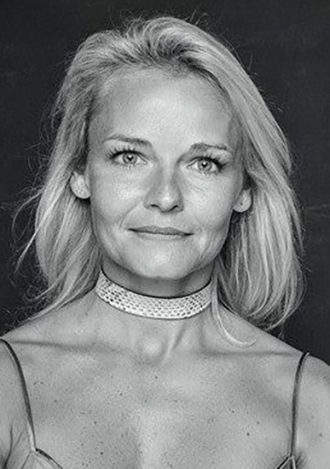 Clare Laverty
Clare Laverty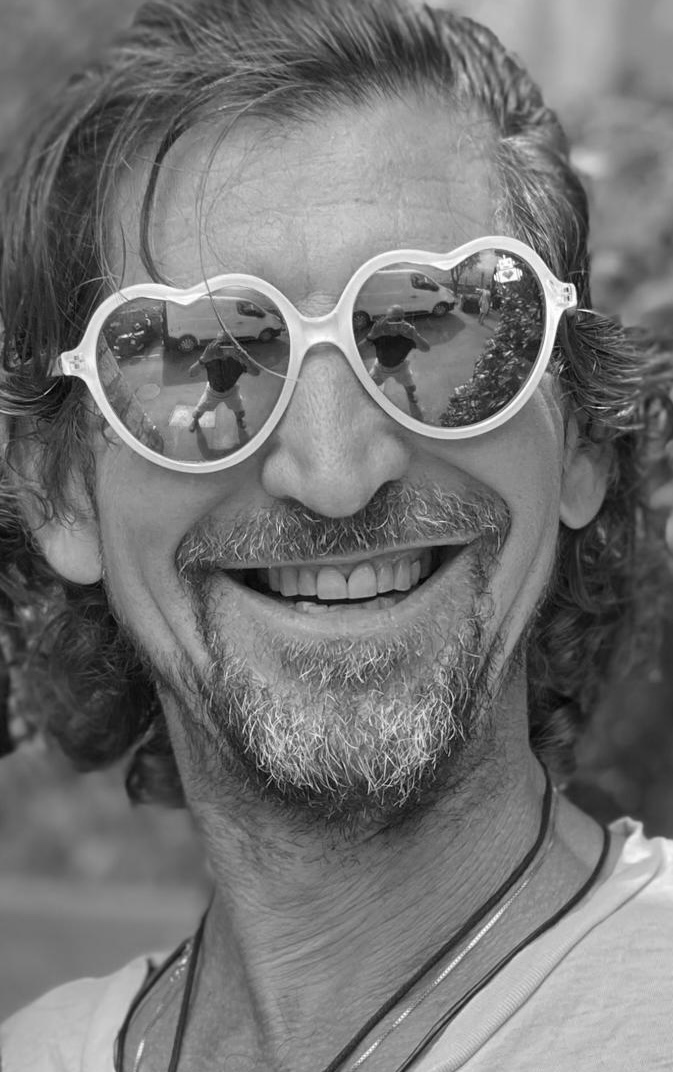 Gary Mueller
Gary Mueller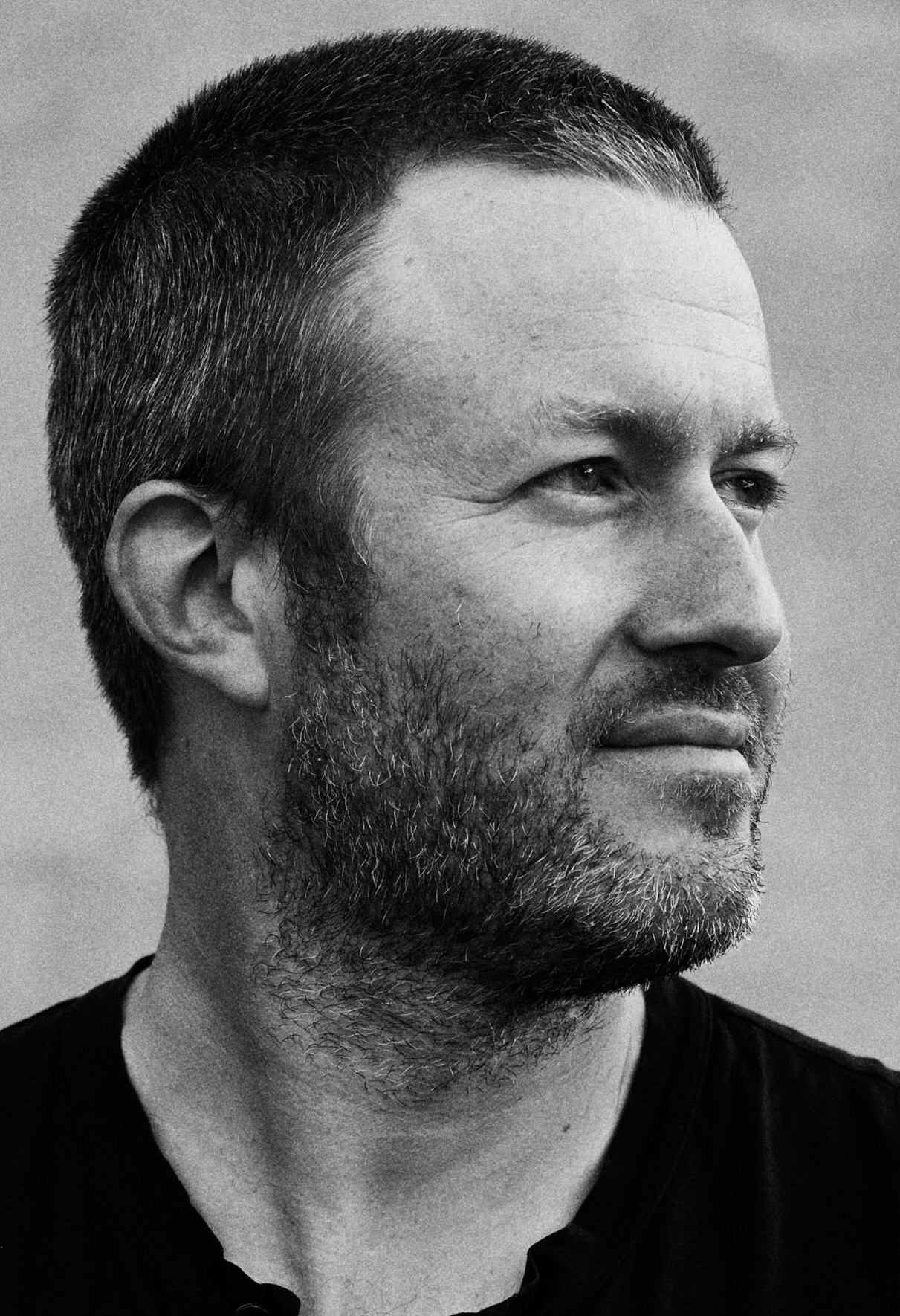 Justin Shaffer
Justin Shaffer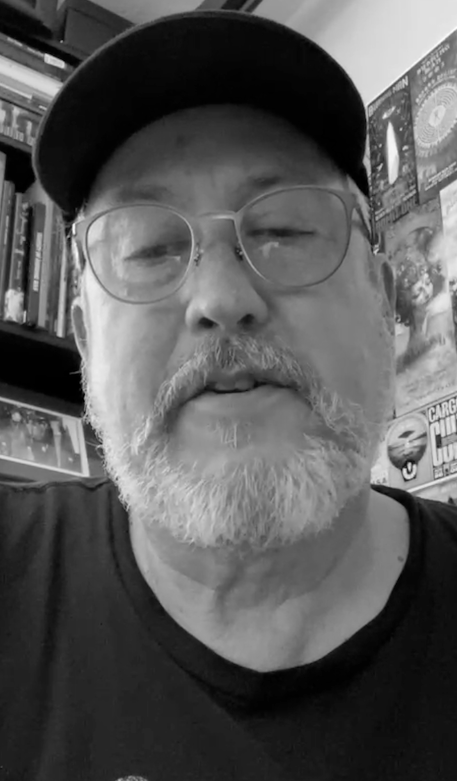 Stuart Mangrum
Stuart Mangrum